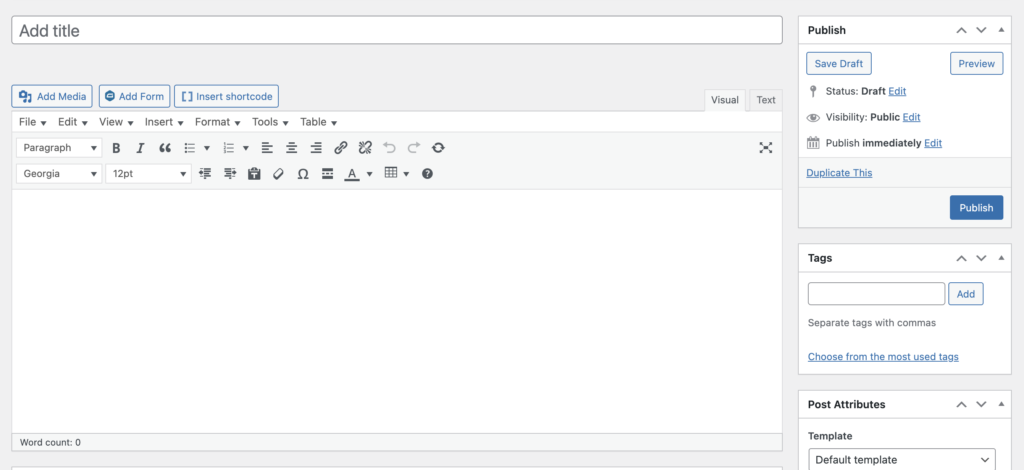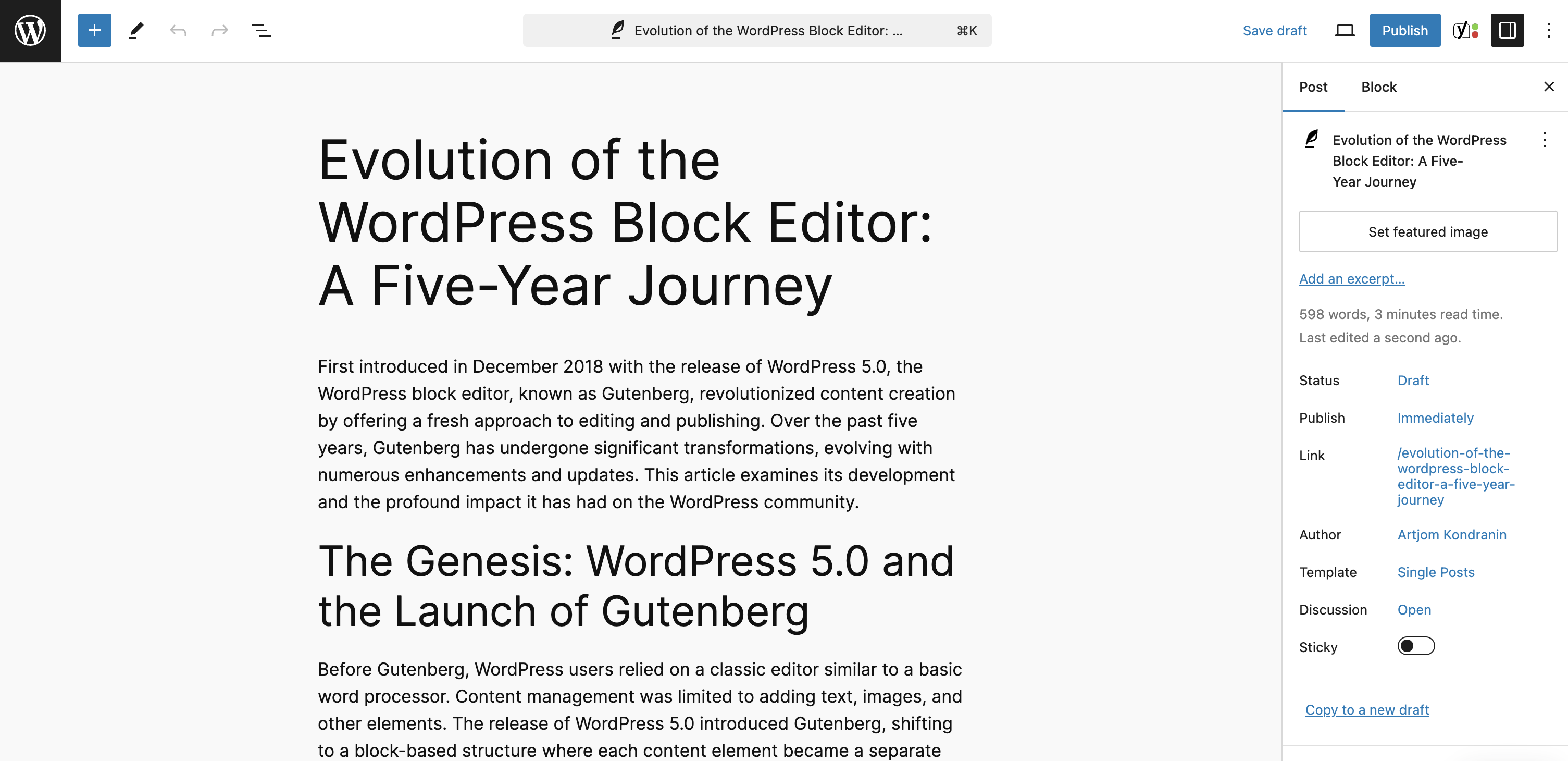First introduced in December 2018 with the release of WordPress 5.0, the WordPress block editor, known as Gutenberg, revolutionized content creation by offering a fresh approach to editing and publishing. Over the past five years, Gutenberg has undergone significant transformations, evolving with numerous enhancements and updates. This article examines its development and the profound impact it has had on the WordPress community.
The Genesis: WordPress 5.0 and the Launch of Gutenberg
Before Gutenberg, WordPress users relied on a classic editor similar to a basic word processor. Content management was limited to adding text, images, and other elements. The release of WordPress 5.0 introduced Gutenberg, shifting to a block-based structure where each content element became a separate block. This allowed for more sophisticated and flexible layouts without needing code or third-party plugins. However, the initial release faced criticism due to stability issues and the absence of some familiar features.

Progress and Enhancements: WordPress 5.1 – 5.9
Versions 5.1 – 5.3
Following the launch of WordPress 5.0, developers prioritized stabilizing and optimizing the editor’s performance. Versions 5.1 and 5.2 introduced significant performance upgrades and added new blocks and features. Version 5.3 brought improvements in user interface and usability, expanding block customization options.
Versions 5.4 – 5.6
These updates focused on adding new blocks and enhancing existing ones. New blocks for social media, improved text formatting features, and advanced multimedia tools were introduced. Version 5.6 further enhanced editing and layout customization capabilities and added new features for working with videos and images.
Versions 5.7 – 5.9
These versions brought substantial improvements to the user interface and performance of the block editor. They introduced new layout options, advanced design tools, and better integration with other plugins and themes. Version 5.9 featured a new template editor, allowing users to create and customize page templates directly within the block editor.
A New Chapter: WordPress 6.0 – 6.6
Version 6.0
WordPress 6.0 marked a significant milestone in the evolution of the block editor, introducing new blocks, improved layout customization options, and enhanced performance. Collaborative tools were added, simplifying the content creation process for teams.
Versions 6.1 – 6.6
Subsequent versions focused on stability and security enhancements. They introduced new multimedia features, improved text and layout editing tools, and expanded integration with external services. Version 6.6 brought significant performance and usability improvements, as well as new design and layout tools.

Common Challenges with the Block Editor
Despite numerous improvements, the WordPress block editor still encounters several challenges:
- Performance: The editor can be slow on large sites, complicating content management.
- Plugin Compatibility: Some older plugins conflict with Gutenberg, causing errors and site issues.
- Learning Curve: New users may need time to adapt to the new interface and features.
- Responsive Design: Styling display settings for standard blocks is only possible through CSS.
Potential Improvements
To enhance the block editor further and improve user experience, the following areas could be addressed:
- Performance Optimization: Enhancing editor performance on large sites and with extensive content volumes.
- Improved Compatibility: Ensuring better compatibility with popular plugins and themes.
- Enhanced Training: Providing more detailed documentation and training materials for users and developers.
- Functionality Expansion: Adding new blocks and tools for multimedia and layout management.
- AI Integration: Leveraging artificial intelligence to automate and enhance the content creation process.
Conclusion
The WordPress block editor has made remarkable strides since its launch in 2018, evolving into a powerful tool for content creation and management. Despite remaining challenges, developers continue to improve the editor, making it more functional, user-friendly, and robust. As we look to the future, we can anticipate further innovations and enhancements that will make content creation even more intuitive and enjoyable.

Leave a Reply